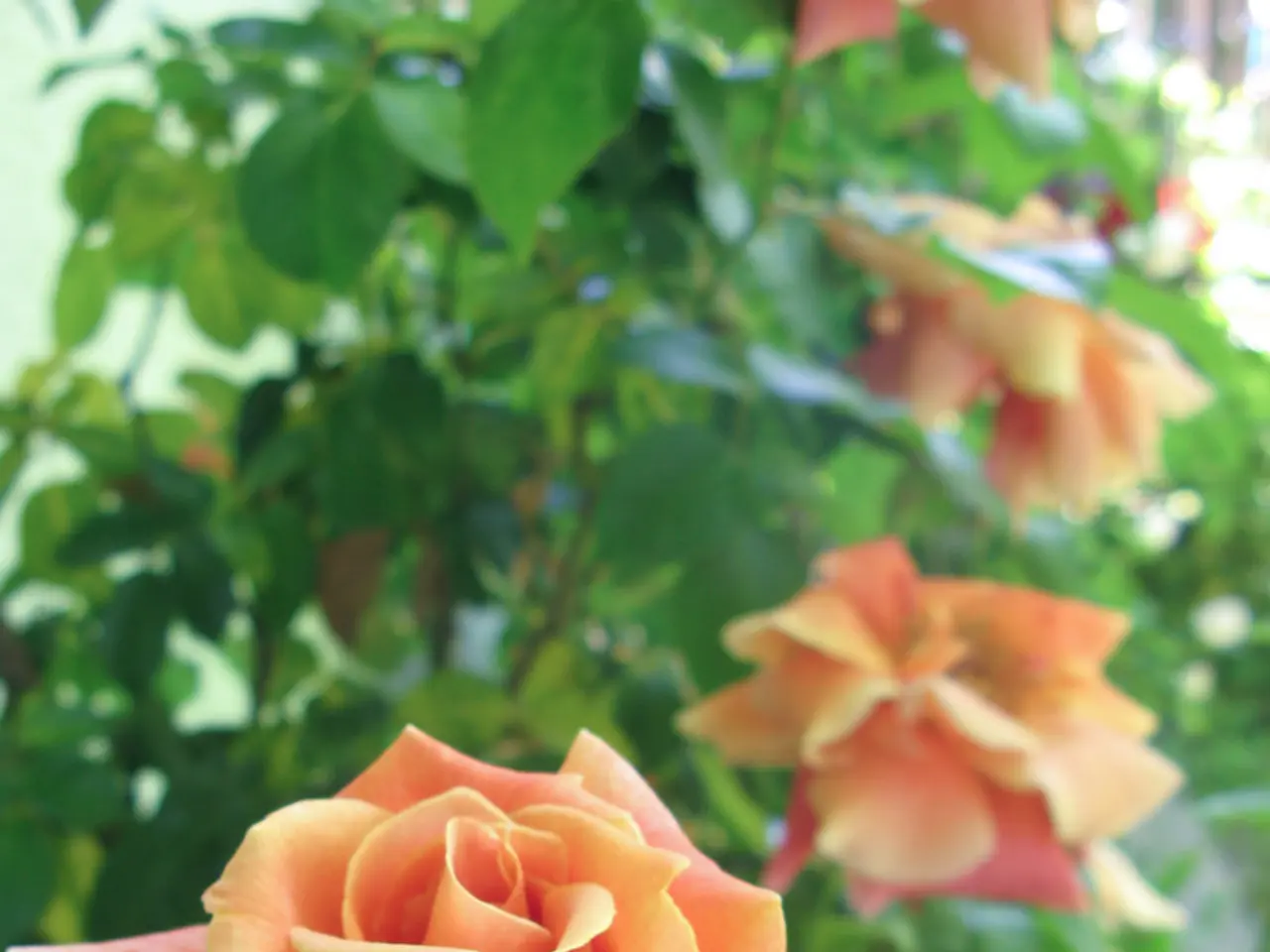Revitalizing Roses: 8 Remedies for Struggling Hedges
Roses are a beloved addition to many gardens, but they require careful attention to thrive. To ensure your roses bloom beautifully, it's essential to be vigilant about common issues affecting their health. This guide will help you identify and address problems related to watering, light, soil, nutrients, pruning, pests, diseases, and chemical damage.
Poor Watering
Roses need consistent watering, but too much or too little can lead to problems. Signs of poor watering include wilting despite watering, root rot, or dry leaf edges. To maintain healthy roses, water them at the base early in the day to avoid prolonged leaf wetness which promotes fungal diseases. Avoid overwatering which can cause root rot; ensure soil drains well.
Inadequate Light
Roses require full sun (at least 6 hours daily). Insufficient light causes weak growth and fewer blooms. Relocate the plant to a sunnier spot if necessary or prune surrounding vegetation to improve light exposure.
Unhealthy Soil
Roses prefer slightly acidic soil (pH 6.0-6.5). Signs of unhealthy soil include poor growth, yellowing leaves (iron chlorosis), and wilting. Test soil pH and nutrient content, and amend soil with compost, sulfur or chelated iron for chlorosis.
Nutrient Deficiency
Yellow leaves with green veins suggest iron deficiency; overall pale leaves may indicate nitrogen deficiency. Use organic fertilizers such as fish emulsion and apply balanced rose-specific fertilizers as recommended.
Pruning Mistakes
Incorrect pruning can cause weak branches and open wounds susceptible to disease. Use sterile tools disinfected with alcohol wipes between plants. Remove diseased or dead canes promptly to prevent fungal infections like cankers and stem dieback.
Pests
Common pests include aphids (sticky residue, curled leaves), spider mites (white webbing, yellow blotches), and thrips. Control methods include spraying undersides of leaves with water to remove pests, applying insecticidal soap or neem oil regularly, and introducing beneficial insects like ladybugs.
Diseases
- Black spot: Black spots surrounded by yellow halos causing leaf drop. Remove infected leaves/canes, clear debris, avoid overhead watering, and apply fungicides like myclobutanil if needed.
- Powdery mildew: Gray-white powdery growth on leaves and stems caused by humidity and poor air circulation. Improve spacing, remove infected parts, spray neem or horticultural oil.
- Rust: Orange or black powdery spots on leaf undersides. Remove infected parts and use fungicides carefully as rust is difficult to control.
- Botrytis (gray mold): Brown spots, fuzzy mold on petals and stems especially in damp conditions. Remove infected parts, improve air circulation, avoid overwatering, and treat with neem oil and potassium bicarbonate.
- Root rot: Wilting even after watering, foul soil smell, mushy brown roots. Treat by removing rotten roots and replanting in well-drained soil with compost and perlite.
Chemical Damage
Avoid over-fertilization and improper pesticide use which can burn leaves or disrupt soil microbes. Always follow label instructions, use pesticides targeted to the pest, and avoid broad-spectrum sprays that harm beneficial insects.
Summary Table
| Issue | Identification | Solutions | |--------------------|--------------------------------------|------------------------------------------------------------------------------------------------------| | Poor watering | Wilting, soggy or dry soil | Water at base, improve drainage, water early in day | | Inadequate light | Weak growth, few blooms | Provide ≥6 hours sunlight, trim shading plants | | Unhealthy soil | Yellow leaves, poor growth | Test pH, amend with compost, sulfur or chelated iron | | Nutrient deficiency| Yellowing leaves with green veins | Apply organic fertilizers like fish emulsion | | Pruning mistakes | Stem dieback, entry points for fungi | Use sterile tools, prune dead/diseased canes | | Pests | Sticky leaves (aphids), webbing (mites)| Spray water/insecticidal soap/neem oil, encourage beneficial insects | | Diseases | Black spots/yellow halos, powdery mildew, rust, gray mold, root rot | Remove infected parts/debris, improve airflow, fungicide sprays, treat root rot by repotting | | Chemical damage | Leaf burn, wilting without cause | Use chemicals carefully, follow instructions, avoid broad-spectrum pesticides |
By following these diagnostic clues and remedies based on symptoms, you can maintain healthy, blooming rose plants. Happy gardening!
Roses demand attentive care regarding home-and-garden elements such as watering, sunlight, and soil to thrive. For instance, Poor Watering results in wilting leaves despite regular watering or dry leaf edges, while Inadequate Light causes weak growth and fewer blooms due to insufficient sunlight. A gardener can prevent these problems by maintaining consistent watering, providing their roses with at least six hours of sunlight daily, or amending unhealthy soil with compost or sulfur to achieve the ideal pH for roses.




